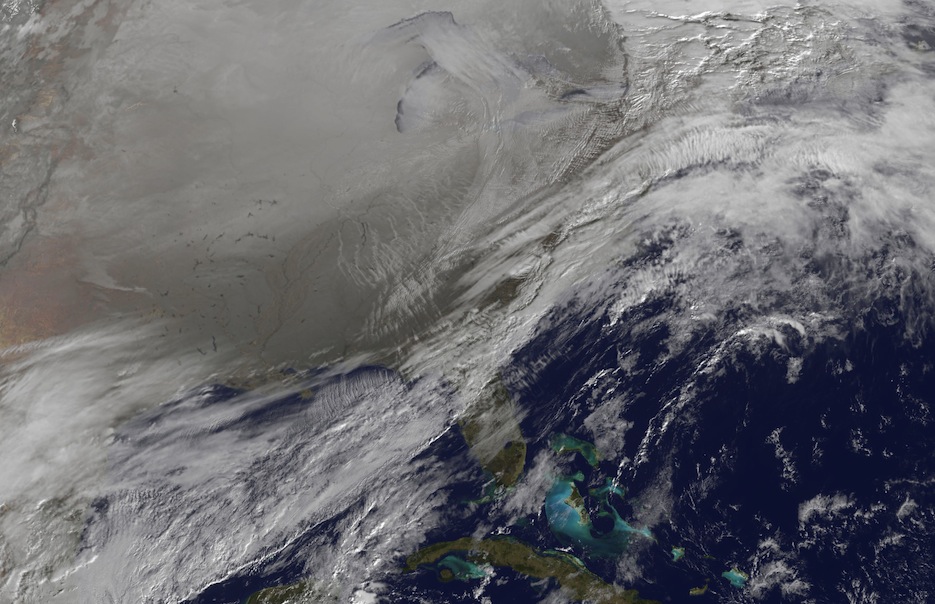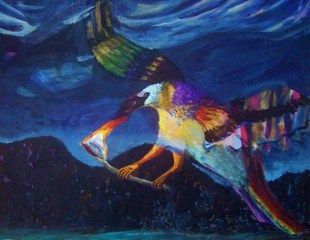True or False? A Quiz on Native Winter Traditions and Legends

Who’s afraid of the polar vortex?
The North Pole’s dark gift of swirling, frigid ice and gloom may be scary, but it’s nothing like these ancient Native winter legends.
The good news is that not all of them are true. But, some of them have been legends for thousands of years.
As the polar vortex makes its way south, these legends and traditions will live on -- scarier than the polar vortex or not -- as stories to be told in by the fire, with hot tea and family gathered for a long time.
Windigo
This is a winter-time ghost story from the Ojibwe First Nation (and believed by the Algonquian people) about a family that’s trying to survive a harsh winter. They are starving and must find food before the next winter storm hits. The father sets out on foot to look for game, following a trail of animal footprints.
He follows the footprints to the edge of a forest, but becomes distracted by how oddly silent it is. Where is the game?
An eerie hissing sound startles him. On the snow below him, he sees a trail of bloody footprints and immediately remembers his father's story about Windigo, the creature that’s as tall as a tree, with a lipless mouth and jagged teeth who ate any man, woman or child that ventured in to his territory, according to American Folklore.
According to the legend, it was worse if the Windigo possessed you. Instead of dying, the luckless individual would become a Windigo himself and hunt those he once loved.
The father continues his walk into the forest, gripping his spear tighter as he hears the hissing sound growing louder, and closer.
Before he can react, the long, furry arms of the Windigo take him; he becomes possessed.
Now a beast and no longer a man, the father stumbles back along the snowy trail. After several miles, he sees his family’s cabin in the distance, and walks up to the front door.
True or false?
False. You can read what really happens here.
Hell-driver and the Spirit of Winter
Another Ojibwe oral tradition shares the story of a bird trying to outsmart a spirit.
After all the other birds flew South for the winter, three were stuck in the North. Two birds, a whooping crane and a mallard duck, broke their wings and their friend, Hell-driver, a grebe, decided to stay back to help them heal.
Hell-driver fished for his friends daily, but when the Spirit of Winter saw how successful the bird was at catching the fish, he was jealous. One day, the Spirit, who did not like Hell-driver, followed him home.
Hell-driver saw that the spirit was peeking in the door of his wigwam and pretended not to see him. The Spirit blew ice-cold air and was trying to freeze the bird out of its home. As the Spirit sent the air into his home, Hell-driver started making a big fire.
But the bird tricked the Spirit and pretended to mop its face with a cloth, acting as if he was burning up. Watching from behind the door, the Spirit thought that it was hot enough for the bird to melt to its death, so it stopped blowing the ice-cold air and left.
True or false?
This one’s true. Read the rest of the tradition here.
Ute Indian Bear Dance
The Ute Indian bear dance happens at the beginning of Spring. Its purpose is to bring members together after a long cold winter.
"You mourn the people who didn't make it through the winter,” said Sarah Cuch to a local news station during a 2012 ceremony. “You enjoy the children who were born in the winter. You enjoy the children who've grown in the winter. You teach them and come out to help everything grow."
The legend is that two brothers were hunting in the mountains when one noticed a bear who appeared to be dancing, and growling at a tree. The brother approached the bear and the bear taught him how to perform a dance and song. The bear told the brother to teach the song to his people, and to have them perform it as a sign of respect for the strength of the bear spirit.
True or false?
This legend is true and remains symbolic to the tribe today. Each spring, a four-day ceremony allows members of the Ute community to reconnect. It symbolizes the bear’s awakening after hibernating from the long winter.
Percussion is used by the tribe to imitate the bear’s growl and the rasp; it also simulates the thunderstorms that signal the return of the growing season in the traditional Ute areas of Colorado and Utah.
Rainbow Crow, Lenni Lenape Tribe
The world became so cold that as the snow fell, ice formed across the oceans, lakes, and seas. Many animals had never seen the snow and at first all they did was play in it.
But when it became unbearably cold, a Wise Owl said that they must send a messanger to Kijiamuh Ka’ong, the Creator, asking him to think the world warm again.
The animals had a difficult time choosing who would go, but they finally settled on Rainbow Crow. When Rainbow Crow met the Creator, she asked the Creator to “un-think the snow” so that the animals would not freeze to death.
The Creator said that the snow and the ice had spirits that could not be destroyed. But the Creator helped the animals by sticking a branch into the hot sun to give the Earth a warm glow. The Creator told Rainbow Crow, a beautiful bird with a wonderful singing voice, to fly back to Earth.
According to the legend, the Rainbow Crow flew out of heaven, but on her way back, she was scorched by the Sun and blackened by the Moon.
By the time Rainbow Crow got back to Earth, it was so sad that it was not able to deliver enough Sun to the animals on Earth. Many perished and died.
True or false?
This one’s false. The bird is able to save all the animals. Read the entire Lenni Lenape tribal legend here.
© 1998 - 2014 Indian Country Today. All Rights Reserved To subscribe or visit go to: http://www.indiancountry.com
Read more at http://indiancountrytodaymedianetwork.com/2014/01/09/true-or-false-native-winter-traditions-and-legends-debunked-153029


